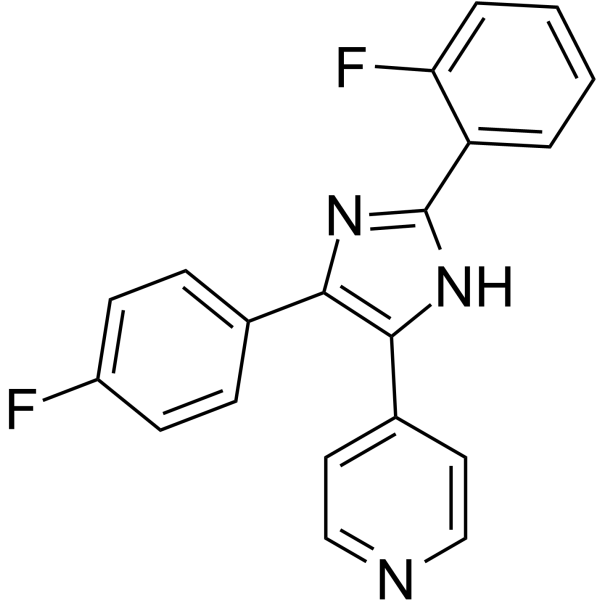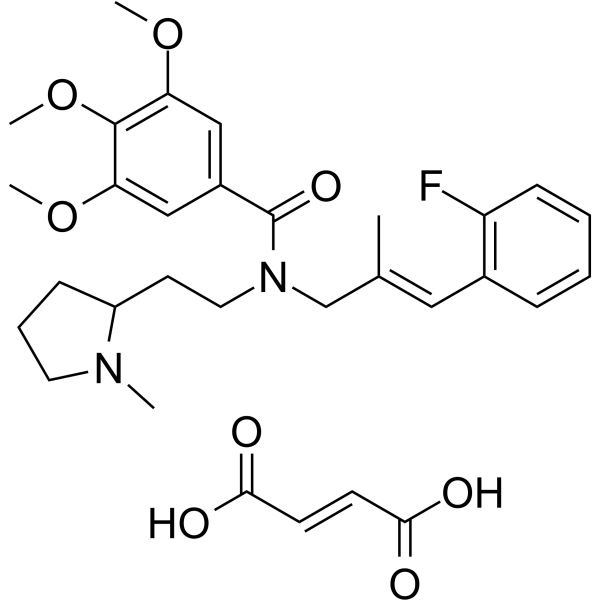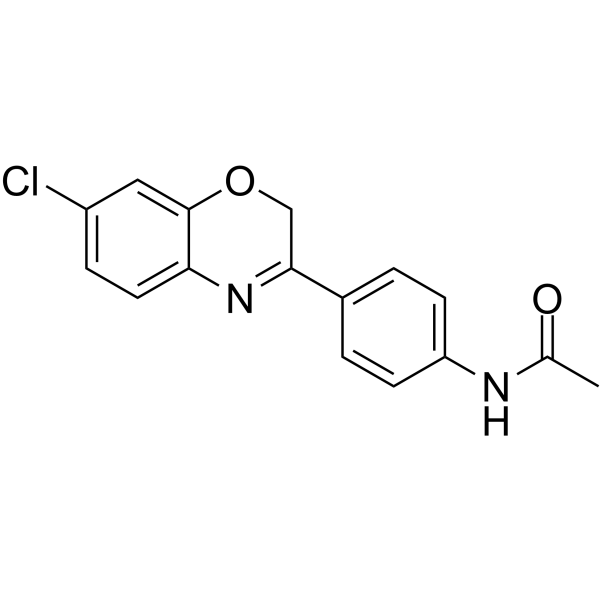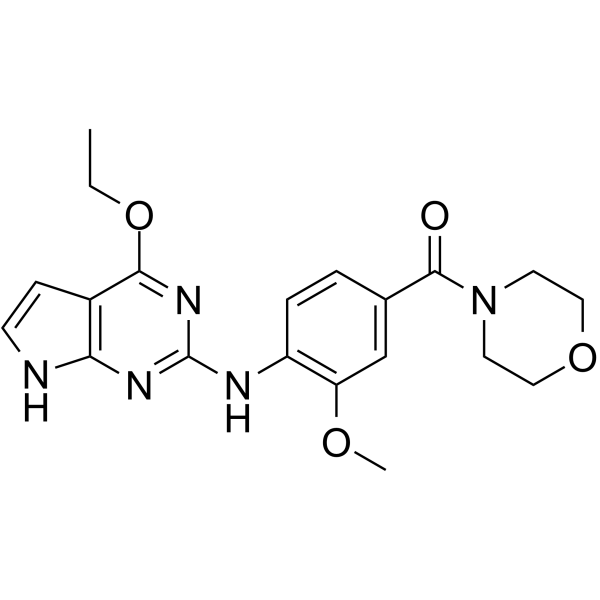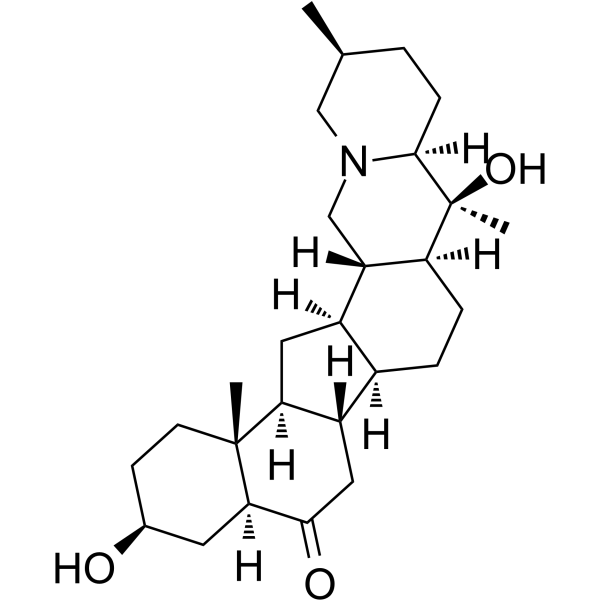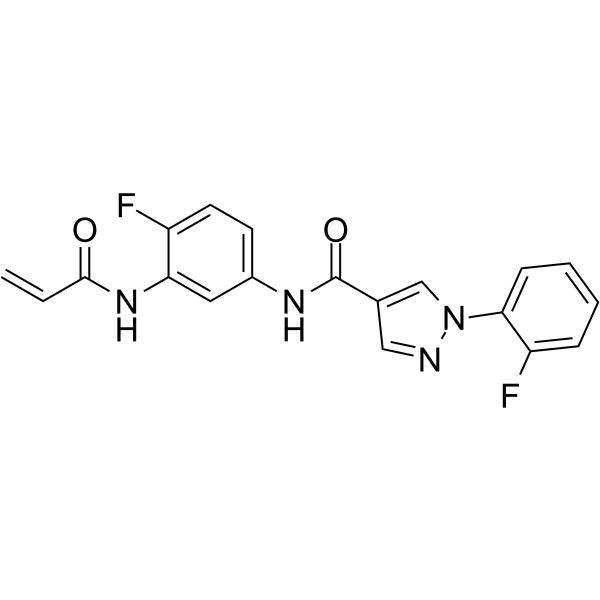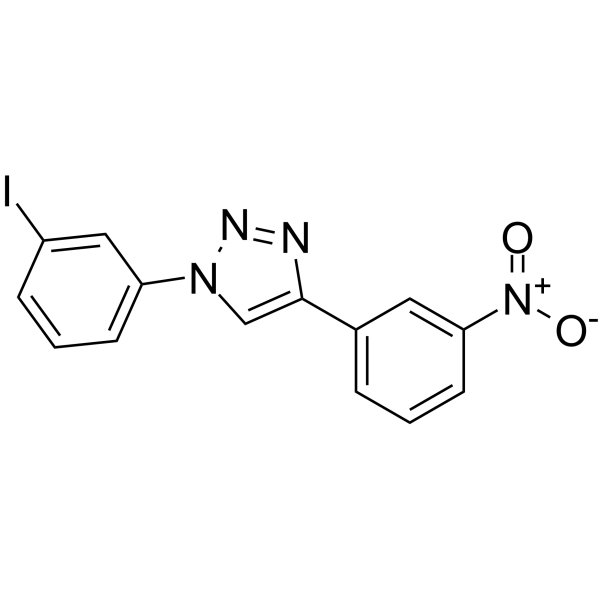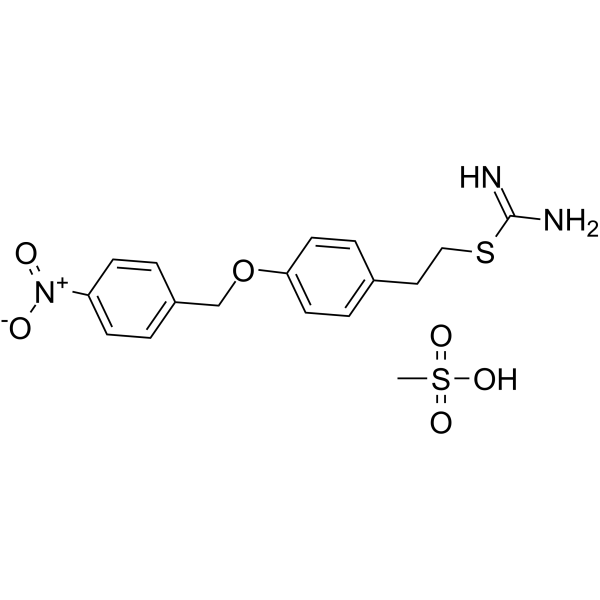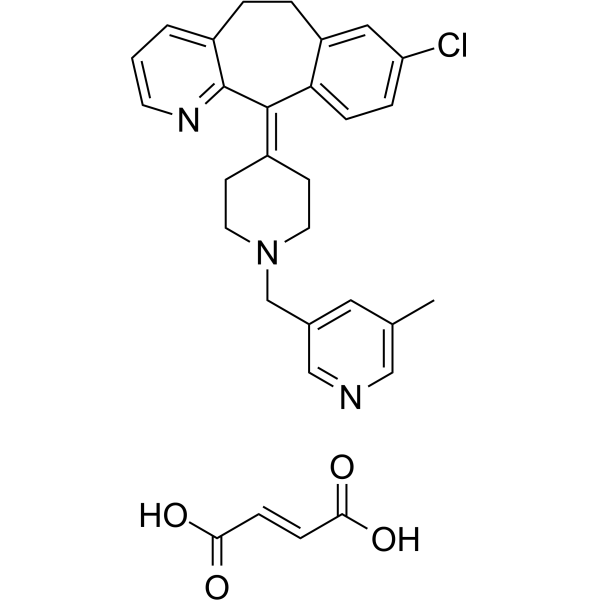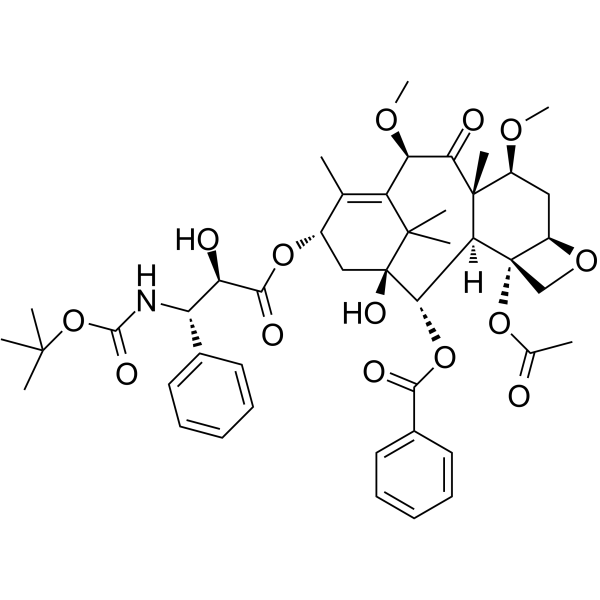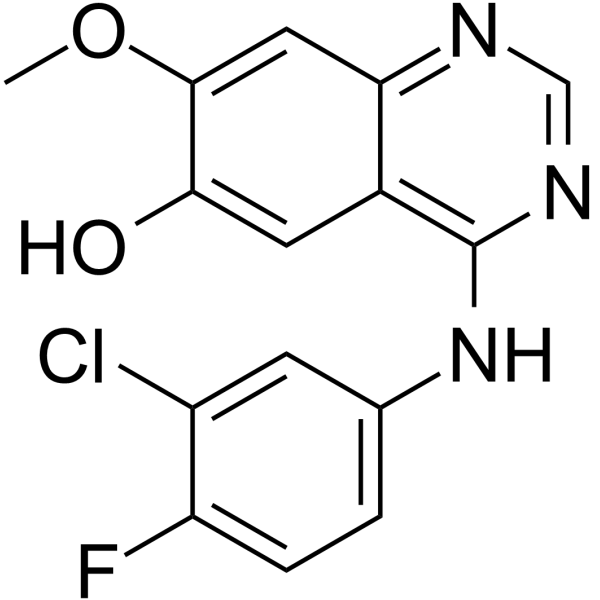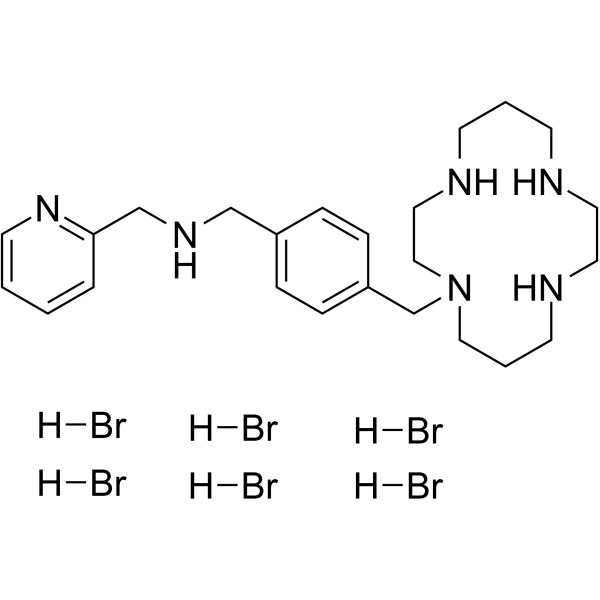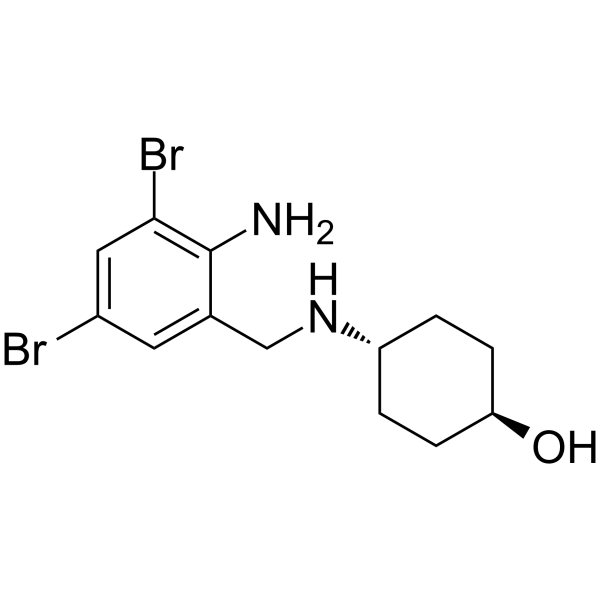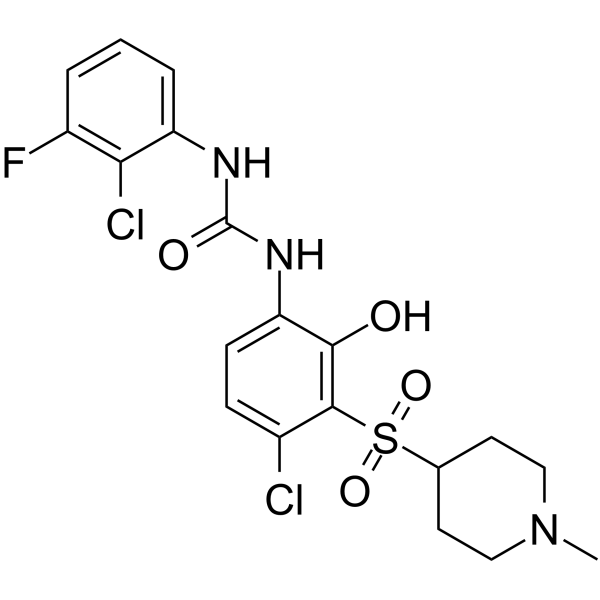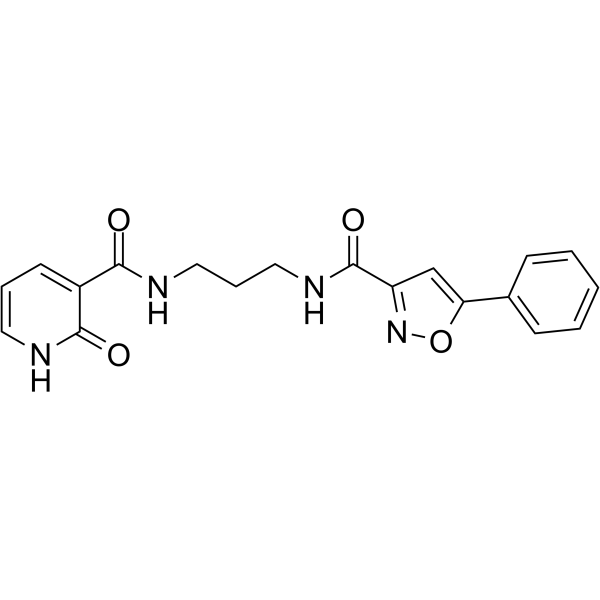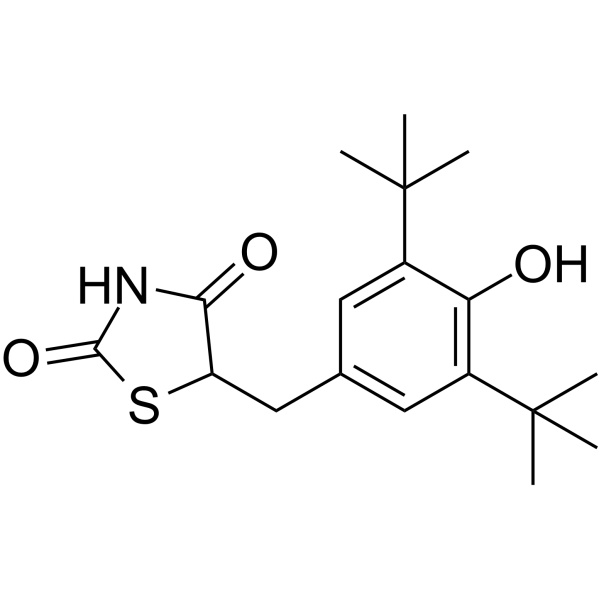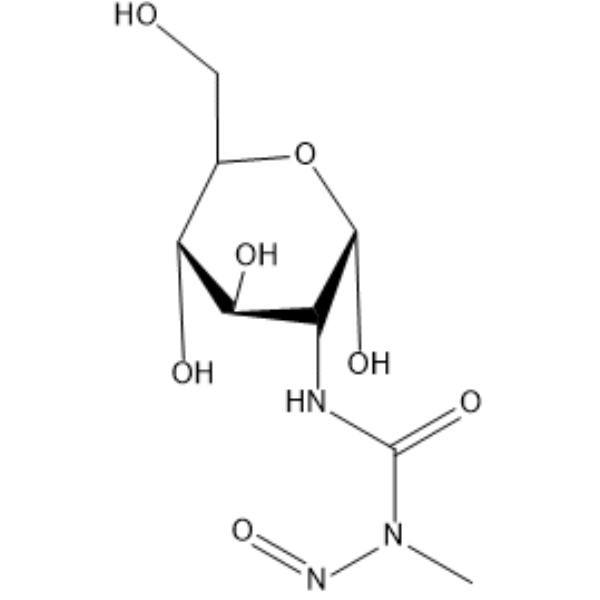|
BP12518
|
TA-02
|
|
|
|
|
TA-02, an analog of SB 203580 (HY-10256), is a p38 MAPK inhibitor with an IC50 of 20 nM. TA-02 especially inhibits TGFBR-2. TA-02 exhibits similar cardiogenic properties as SB 203580 and SB 202190 (HY-10295).
|
|
BP12519
|
VUF11207 fumarate
|
|
|
|
|
VUF11207 fumarate is an agonist of CXCR7 and a high-potency ligand of CXCR7 (pKi: 8.1).
|
|
BP12520
|
QX77
|
|
|
|
|
QX77 is a chaperone-mediated autophagy (CMA) activator.
|
|
BP12521
|
LRRK2 inhibitor 1
|
|
|
|
|
LRRK2 inhibitor 1 is a selective, potent and oral LRRK2 inhibitor with an pIC50 of 6.8 nM.
|
|
BP12522
|
Peiminine
|
|
|
|
|
Peiminine is an effective inhibitor for lung inflammation and pulmonary fibrosis in a rat model of bleomycin-induced lung injury.
|
|
BP12523
|
EN6
|
|
|
|
|
EN6-mediated ATP6V1A modification decouples the v-ATPase from the Rags, leading to inhibition of mTORC1 signaling, increased lysosomal acidification and activation of autophagy. EN6 clears TDP-43 aggregates, a causative agent in frontotemporal dementia, in a lysosome-dependent manner. EN6 is a small-molecule in vivo activator of autophagy that covalently targets cysteine 277 in the ATP6V1A subunit of the lysosomal the vacuolar H+ ATPase (v-ATPase).
|
|
BP12524
|
P62-mediated mitophagy inducer
|
|
|
|
|
P62-mediated mitophagy inducer is a regulator of mitophagy.
|
|
BP12525
|
Proflavine Hemisulfate
|
|
|
|
|
Proflavine Hemisulfate is the hemisulfate salt form of proflavine, an acridine-derived fluorescent contrast and disinfectant agent that can potentially be used for cellular imaging and antiseptic purposes.
|
|
BP12526
|
KB-R7943 mesylate
|
|
|
|
|
KB-R7943 mesylate is a widely used inhibitor of the reverse Na+/Ca2+ exchanger (NCXrev) with IC50 of 5.7±2.1 μM.
|
|
BP12527
|
Rupatadine Fumarate
|
|
|
|
|
Rupatadine Fumarate (UR-12592 Fumarate) is a potent dual PAF/H1 antagonist with Ki of 0.55/0.1 uM.
|
|
BP12528
|
Cabazitaxel
|
|
|
|
|
Cabazitaxel is a taxane and antineoplastic agent which is currently used in the therapy of castration-resistant metastatic prostate cancer after failure of docetaxel.
|
|
BP12529
|
FAAH-IN-2
|
|
|
|
|
FAAH-IN-2 is a potent inhibitor of FAAH(fatty acid amide hydrolase).
|
|
BP12530
|
3PO
|
|
|
|
|
3PO is a small-molecule inhibitor of PFKFB3 (IC50: 22.9 μM), inhibiting the proliferation of several human malignant hematopoietic and adenocarcinoma cell lines (IC50: 1.4-24 μM). It suppresses glucose uptake, and decreases the intracellular concentration of Fru-2,6-BP, lactate, ATP, NAD+, and NADH.
|
|
BP12531
|
AMD 3465 hexahydrobromide
|
|
|
|
|
AMD 3465 hexahydrobromide is a CXCR4 receptor antagonist with potential anticancer and anti-HIV activity.
|
|
BP12532
|
Ambroxol
|
|
|
|
|
Ambroxol is a secretolytic agent used in the treatment of respiratory diseases associated with viscid or excessive mucus. It is the active ingredient of Mucosolvan, Lasolvan or Mucoangin. The substance is a mucoactive drug with several properties including secretolytic and secretomotoric actions that restore the physiological clearance mechanisms of the respiratory tract which play an important role in the body's natural defense mechanisms. It stimulates synthesis and release of surfactant by type II pneumocytes. Surfactants act as an anti-glue factor by reducing the adhesion of mucus to the bronchial wall, in improving its transport and in providing protection against infection and irritating agents.
|
|
BP12533
|
CXCR2-IN-1
|
|
|
|
|
CXCR2-IN-1 has a pIC50 of 9.3 and is a CXCR2 antagonist of the central nervous system penetration agent.
|
|
BP12534
|
ML327
|
|
|
|
|
ML327 is a blocker of MYC which can also de-repress E-cadherin transcription and reverse Epithelial-to-Mesenchymal Transition (EMT).
|
|
BP12535
|
sbp-7455
|
|
|
|
|
SBP-7455 potently inhibited ULK1/2 enzymatic activity in vitro and in cells, reduced the viability of TNBC cells and had oral bioavailability in mice.
|
|
BP12536
|
NL-1
|
|
|
|
|
NL-1 is a mitoNEET inhibitor with antileukemic effect.
|
|
BP12537
|
Streptozocin
|
|
|
|
|
Streptozotocin is an antibiotic that is produced by Stretomyces achromogenes. It is used as an antineoplastic agent and to induce diabetes in experimental animals.
|
